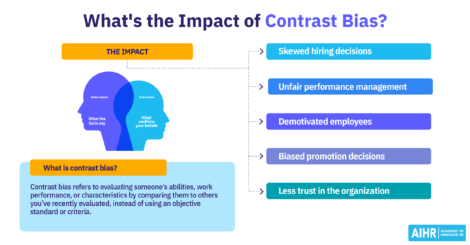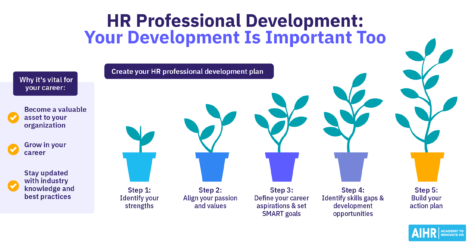5 Reasons Why Diversity Hiring Matters (And How to Go about it)

Diversity hiring is about much more than ticking boxes. Being a hot topic, workplace diversity gets a lot of mentions in HR trend lists for 2018. But rather than simply creating the perfect male/female ratio, there’s a strong business rationale behind diversity hiring. In today’s article, we’ll take a closer look at hiring for diversity and why it’s a no-brainer.
Recent stats on diversity
Alright, let’s start with some cold hard facts about diversity. Earlier this month, management consulting firm McKinsey published its Delivering Through Diversity report – which I highly recommend you read by the way. In this report, the link between diversity, financial performance and value creation got confirmed once more.
Through their research – based on US and UK data – McKinsey found that companies in the top quartile for gender diversity on their executive teams were 21% more likely to have an above-average profitability than those in the 4th quartile.
When it comes to ethnic and cultural diversity, top quartile companies are 33% more likely to outperform on profitability.
Not being diverse on the other hand is costing companies: organizations in the fourth quartile on gender, as well as ethnic diversity, underperform their industry peers by 29% on profitability.
Lastly, and perhaps unsurprisingly, McKinsey found that diversity progress is relatively slow: since 2015, the 346 companies in the firm’s research report increased the average gender representation on their executive teams only by 2 percentage points (to 14%). Their ethnic & cultural diversity went up by just 1 percentage point, to 13%.
Baring in mind that the size of the executive teams used for this research is around 10 to 15 people this indeed indicates limited progress.
5 Reasons why diversity hiring matters
Apart from the (obvious) financial benefits of hiring for diversity, there are other factors to take into account. We’ll mention a sample of the benefits that more diverse companies enjoy below.
1. It grows your talent pool
Organizations that embrace diversity hiring benefit from a larger talent pool than those who don’t. Their vacancies will gain interest from a wider range of candidates – because more people can relate to them – with different backgrounds.
2. It improves employee happiness, productivity & retention
Employees who feel that they’re accepted and appreciated for who they are – no matter what their gender, age or ethnic background – are happier. And happy staff is more productive and less likely to leave prematurely.
3. It improves innovation & creativity
When people from all walks of life come together, beautiful things happen. The combination of different experiences, working styles, and (cultural) backgrounds sparks new ideas and collaboration.
4. It’s positive for your employer brand
This seems obvious and is similar to why diversity hiring leads to a larger talent pool. If your brand is known for its diversity, it will appeal to many different customers, candidates and potential business partners.
5. It increases your workforce’s range of skills, talents & experiences
And as such, hiring for diversity will help you better understand your customers’ needs. The more diverse your workforce is, the greater the chances are that your employees will be able to cater to individual customer needs.

Hiring for diversity with technology
Since we’re all about digital HR and technology here at DigitalHRTech, we thought we’d include some examples of how technology can help you increase the diversity of your workforce.
Artificial Intelligence
Yes, there it is again, AI. The use of AI-driven chatbots in your recruitment process can reduce bias by eliminating elements such as age, gender, and appearance from the equation. A broader, more diversified, selection of potential candidates is the result.
How is this possible you wonder? Let me elaborate.
Recruiting chatbots – like Mya for example – and other AI-powered recruitment software can be programmed (by human beings) to ignore demographic information about candidates such as name, attended schools and zip codes.
So human intervention is still necessary to make sure there is no (unconscious) bias in the recruiting process. Because if there is, the AI-driven algorithm will learn and replicate these existing biases.
The good news, however, is that AI can help us detect bias so we can then use our human judgment and experience to remove it from the recruitment process. This, in turn, will positively impact your diversity hiring.
Artificial intelligence is also used in automated preselection tools. Applicants go through an online assessment, play games and answer questions, while an algorithm calculates the likelihood of them being a good match for the role they apply for and the company they apply to. Regardless the candidate’s background and other demographic information.
Check our article about AI in HR for more examples.
Diversify your job postings
When it comes to hiring for diversity, the job description is more important than you think. Things like the words you choose and the way the job advert is written matter as they can turn off a certain type of candidate.
Textio is an example of a company that knows that ‘in hiring, every word counts’. It counts for instance, for the number of qualified – and diverse – candidates that will apply.
Textio uses data and predictive analytics to analyze meaningful language patterns that cause some job postings to succeed where others don’t. As the number of analyzed documents increases, so does the accuracy of the predictions. Moving ever closer to that perfect, diversity guaranteeing, job advert.
Assess objectively
Perhaps less known for its (gender) bias – but therefore not less important – is the performance review. Performance management suffers from gender bias issues too. As a consequence, according to Gabriela Burlacu from SAP SuccessFactors, women, for instance, are less likely to be considered as leadership material.
SAP’s SuccessFactors – a program that aims to objectively assess employee potential and identify, develop, and retain talent – offers a tool that helps managers with performance management and alerts them to gender bias issues.
Features include ‘calibration analysis by diversity rules, such as in-app nine-box descriptors, which help ensure consistent, equitable standards in evaluating performance, potential and promotion eligibility’.
Start diversifying
Although the above is by no means a full summary of reasons why hiring for diversity is important, it should give you a pretty clear picture. Adoption figures may still be lagging behind but the truth is that having a diverse workforce – and executive team – has huge benefits for any organization. Not diversifying simply means missing out. On all levels.
Weekly update
Stay up-to-date with the latest news, trends, and resources in HR
Learn more
Related articles
Are you ready for the future of HR?
Learn modern and relevant HR skills, online














